Codex can keep your continuous integration (CI) signal green by running automatically whenever a workflow fails. This guide adapts the official Codex cookbook so GitHub Actions can invoke the Codex CLI, apply targeted fixes, verify tests, and open a pull request for review.
End-to-end flow
Below is the pipeline flow we’ll implement:
- A primary workflow named
CI(rename as needed) runs as normal. - When the workflow finishes with a failure, a second workflow installs Codex, gathers context, and delegates to the Codex CLI via
openai/codex-action. - Codex iterates locally in the GitHub-hosted runner, applies a minimal fix, and pushes a pull request back to the failing branch for review.
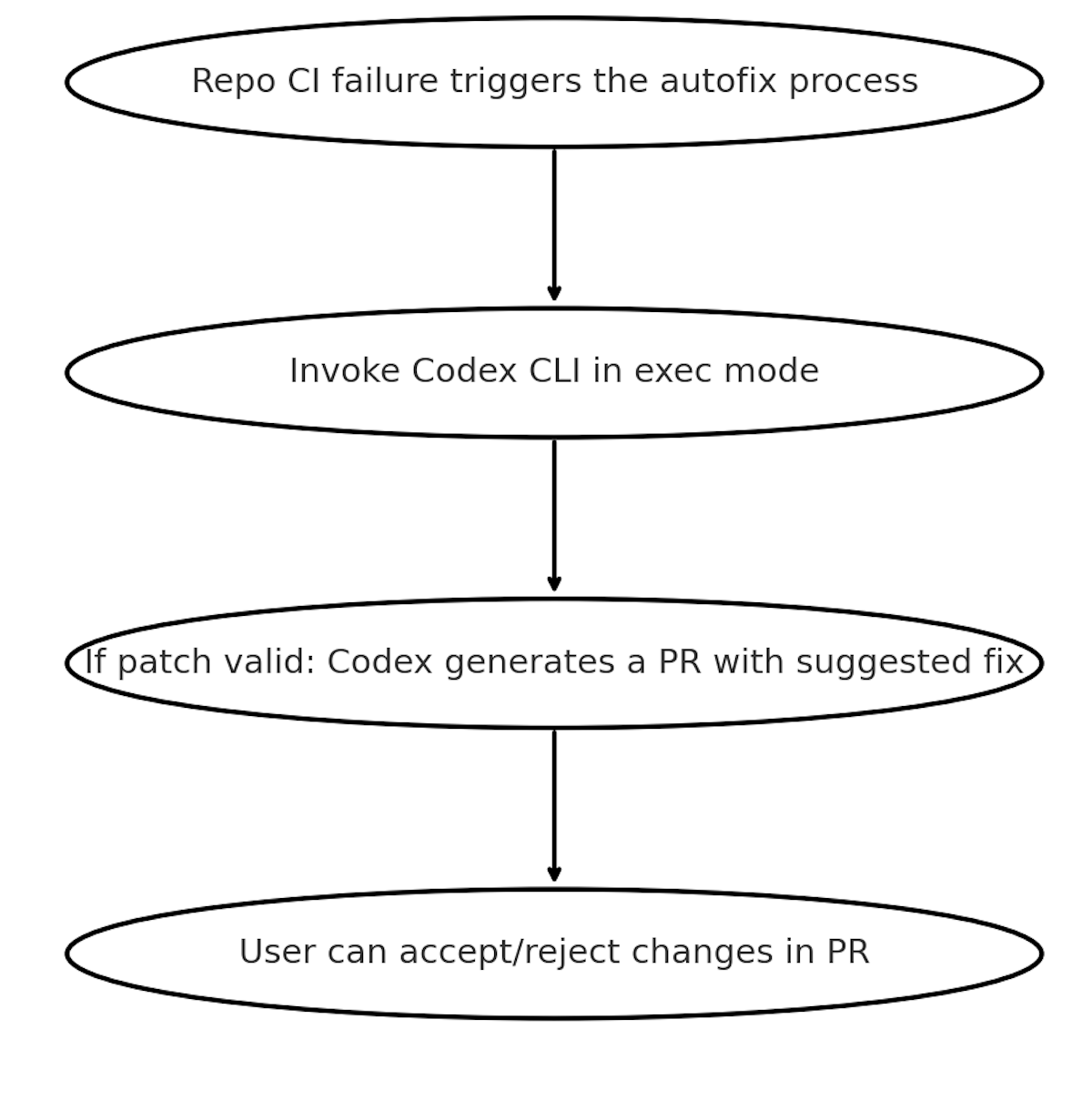
Prerequisites
- A repository with GitHub Actions enabled and a primary workflow to monitor.
- The
OPENAI_API_KEYsecret configured either at the repo or organization level so Codex CLI can authenticate. - Python available in the runner image (needed for
codex login). - Repository permissions that allow GitHub Actions to create branches and pull requests.
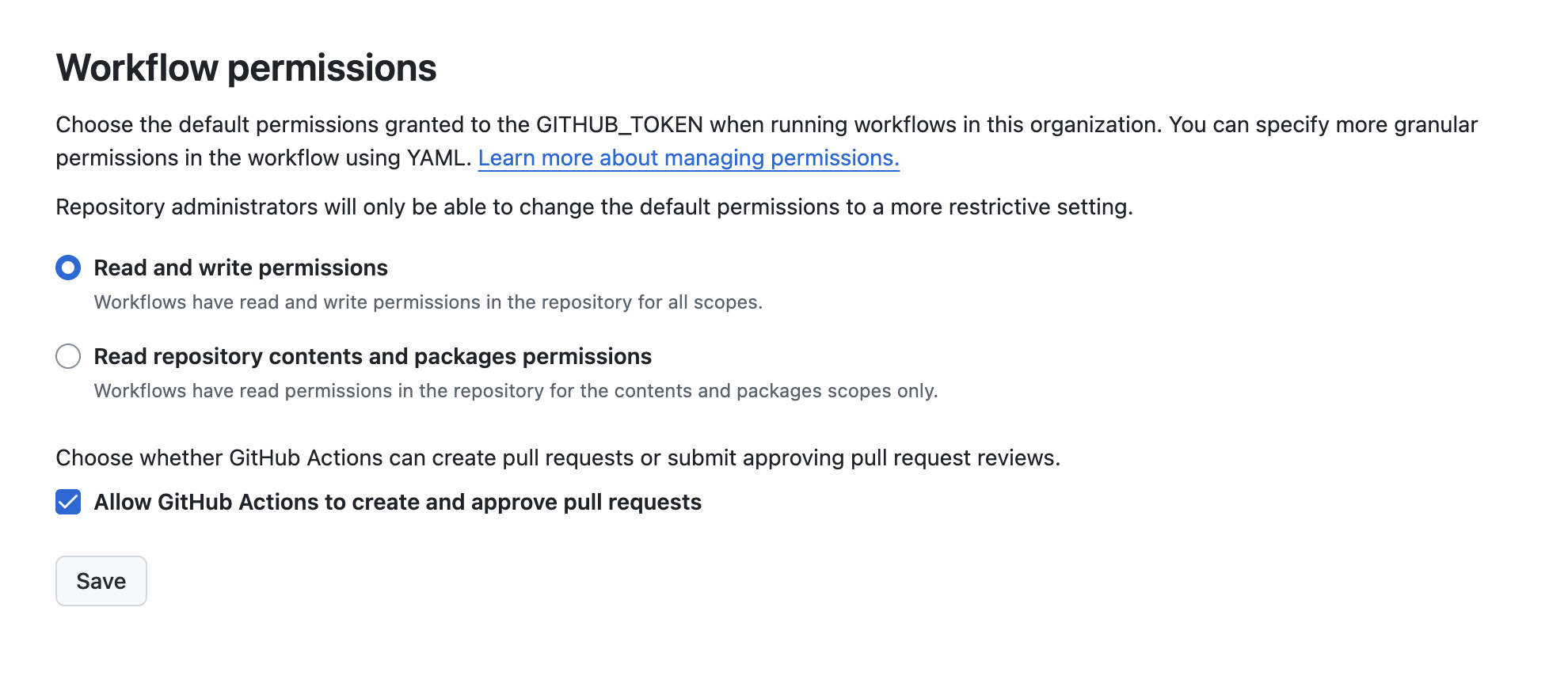
Step 1: Add the GitHub Action to your CI Pipeline
Create a workflow such as .github/workflows/codex-autofix.yml that listens for failed runs from your primary workflow. Update the workflows array if your pipeline uses a different name. The job installs dependencies, runs Codex with a guard-railed prompt, re-runs your tests, and uses peter-evans/create-pull-request to stage a reviewable fix.
name: Codex Auto-Fix on Failure
on:
workflow_run:
# Trigger this job after any run of the primary CI workflow completes
workflows: ["CI"]
types: [completed]
permissions:
contents: write
pull-requests: write
jobs:
auto-fix:
# Only run when the referenced workflow concluded with a failure
if: ${{ github.event.workflow_run.conclusion == 'failure' }}
runs-on: ubuntu-latest
env:
OPENAI_API_KEY: ${{ secrets.OPENAI_API_KEY }}
FAILED_WORKFLOW_NAME: ${{ github.event.workflow_run.name }}
FAILED_RUN_URL: ${{ github.event.workflow_run.html_url }}
FAILED_HEAD_BRANCH: ${{ github.event.workflow_run.head_branch }}
FAILED_HEAD_SHA: ${{ github.event.workflow_run.head_sha }}
steps:
- name: Check OpenAI API Key Set
run: |
if [ -z "$OPENAI_API_KEY" ]; then
echo "OPENAI_API_KEY secret is not set. Skipping auto-fix." >&2
exit 1
fi
- name: Checkout Failing Ref
uses: actions/checkout@v4
with:
ref: ${{ env.FAILED_HEAD_SHA }}
fetch-depth: 0
- name: Setup Node.js
uses: actions/setup-node@v4
with:
node-version: '20'
cache: 'npm'
- name: Install dependencies
run: |
if [ -f package-lock.json ]; then npm ci; else npm i; fi
- name: Run Codex
uses: openai/codex-action@main
id: codex
with:
openai_api_key: ${{ secrets.OPENAI_API_KEY }}
prompt: >-
You are working in a Node.js monorepo with Jest tests and GitHub Actions. Read the repository,
run the test suite, identify the minimal change needed to make all tests pass, implement only that change,
and stop. Do not refactor unrelated code or files. Keep changes small and surgical.
codex_args: '["--config","sandbox_mode=\"workspace-write\""]'
- name: Verify tests
run: npm test --silent
- name: Create pull request with fixes
if: success()
uses: peter-evans/create-pull-request@v6
with:
commit-message: "fix(ci): auto-fix failing tests via Codex"
branch: codex/auto-fix-${{ github.event.workflow_run.run_id }}
base: ${{ env.FAILED_HEAD_BRANCH }}
title: "Auto-fix failing CI via Codex"
body: |
Codex automatically generated this PR in response to a CI failure on workflow `${{ env.FAILED_WORKFLOW_NAME }}`.
Failed run: ${{ env.FAILED_RUN_URL }}
Head branch: `${{ env.FAILED_HEAD_BRANCH }}`
This PR contains minimal changes intended solely to make the CI pass.Step 2: Watch the follow-up workflow run
When the main workflow fails you can monitor both the failure and the Codex follow-up under the Actions tab.
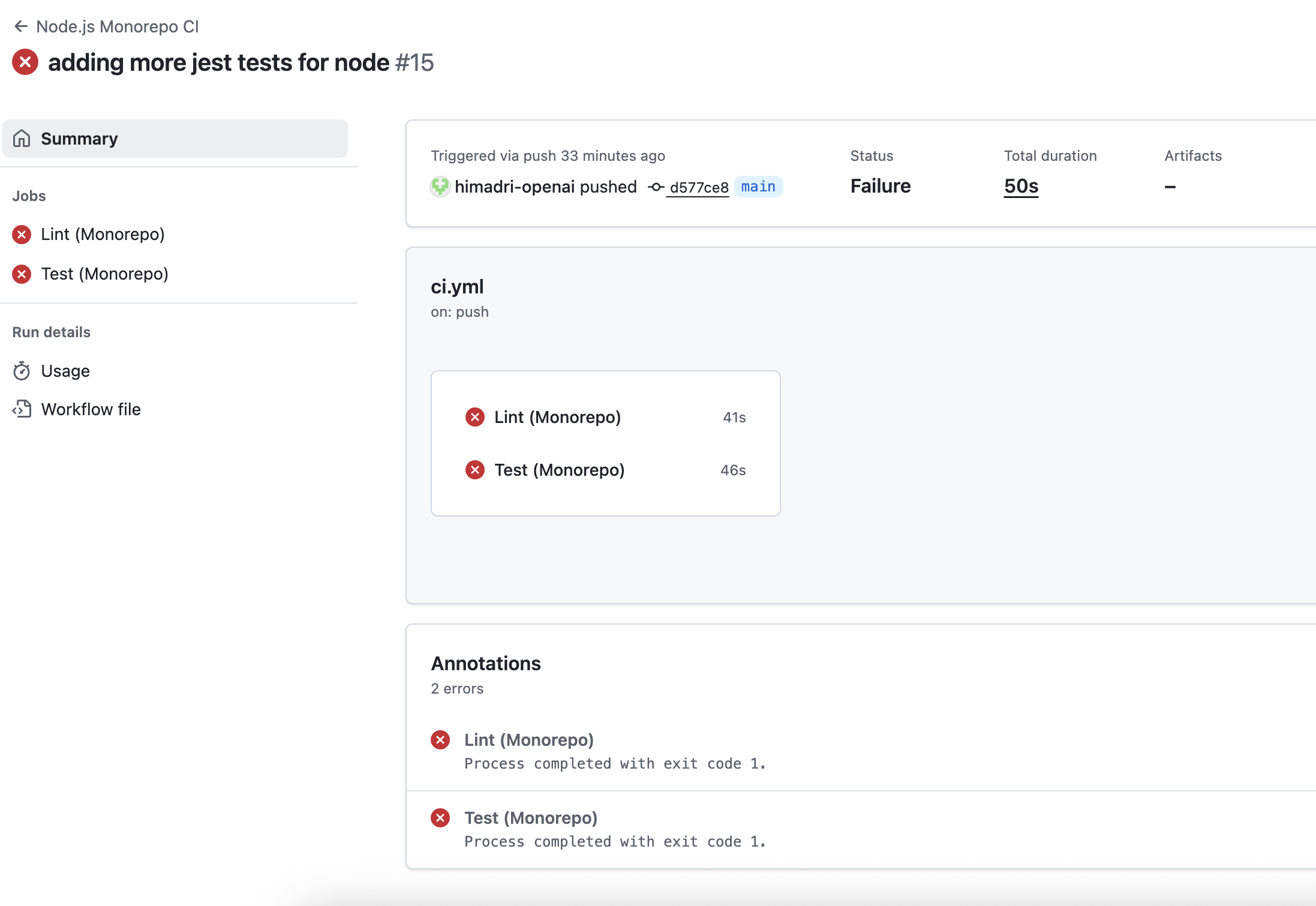
The autofix workflow will appear as soon as the triggering workflow finishes.
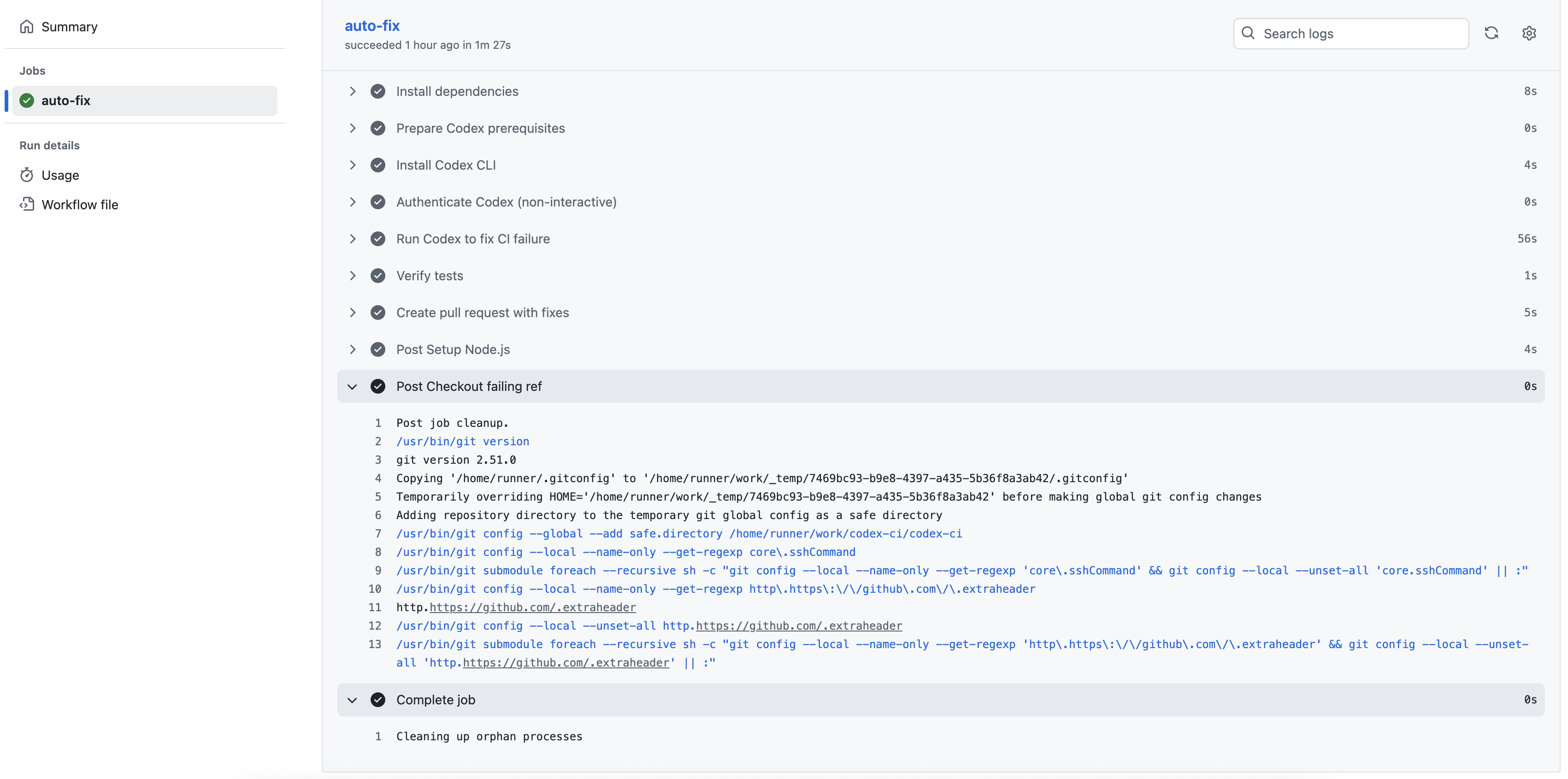
Step 3: Review the generated pull request
After Codex finishes, it opens a pull request on a branch named codex/auto-fix-<run_id> that contains the proposed patch along with a summary referencing the failed run. Review and merge as you would with any contribution.
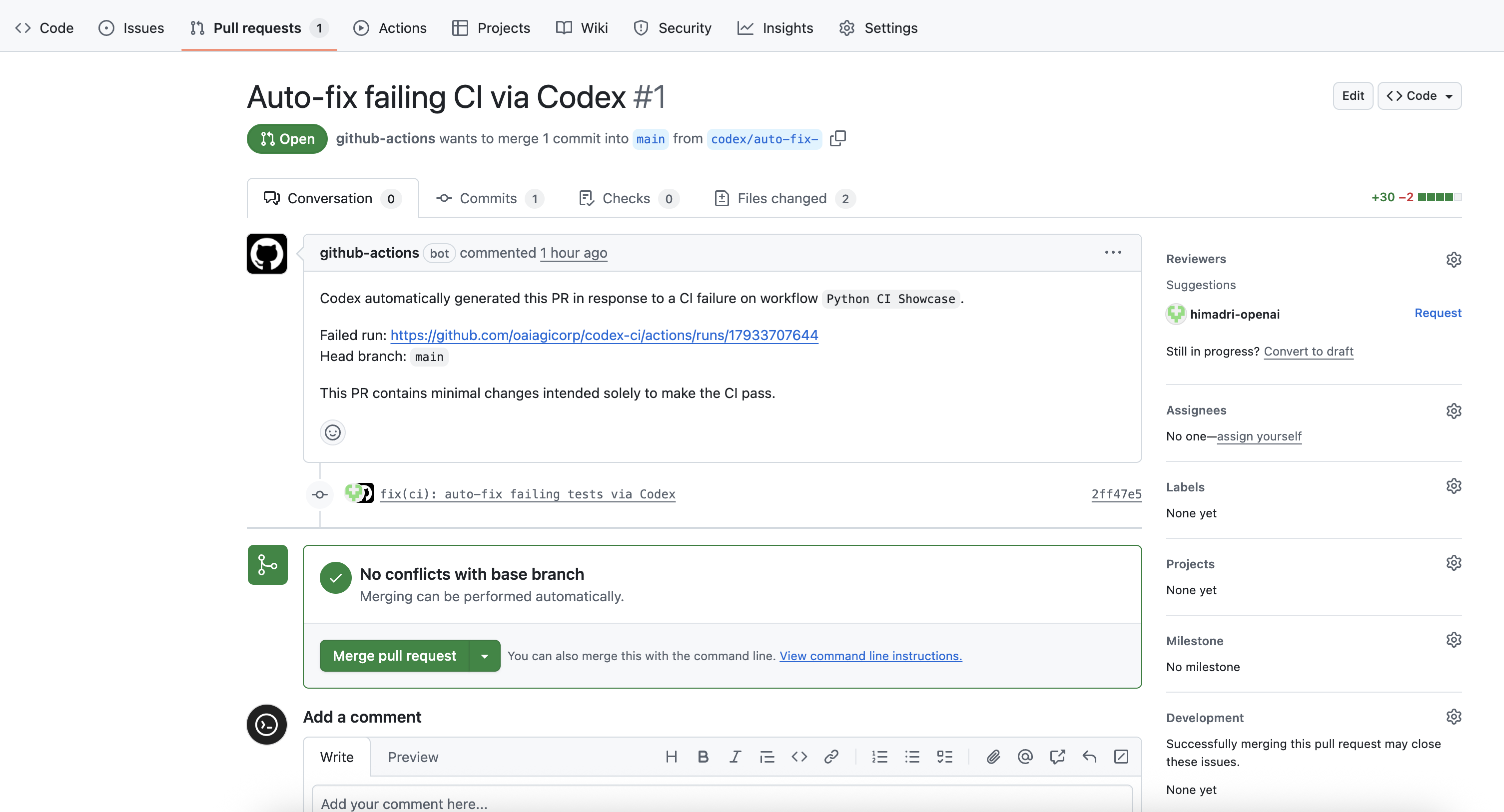
Conclusion
Embedding Codex CLI in CI automates repetitive cleanup steps after failures. You can adapt the same scaffold to run different test commands, adjust prompts for your stack, or extend the workflow with additional safeguards while keeping Codex in control of quick fixes.